Any Questions?
What is the Difference Between the Commonwealth Home Support Programme and Support at Home Program
In Australia, the Commonwealth Home Support Programme (CHSP) and the Support at Home (SAH) program (which will replace the Home Care Packages Program from November 1, 2025) offer essential support for older individuals who want to live independently in their homes. While both programs aim to help seniors, they serve different levels of need and will provide different levels of assistance.
In this blog, we will explore these two key programs, breaking down their specific services, eligibility criteria, and how they differ in terms of cost and structure. Whether you are seeking basic assistance to maintain independence at home or more comprehensive care for complex needs, this guide will help you understand which support might be best for your or your loved one’s situation.
Understanding the Commonwealth Home Support Programme (CHSP)
The Commonwealth Home Support Programme offers entry-level support for older Australians who need assistance to stay at home. In this program, CHSP service providers work closely with seniors to maintain their independence and enhance their quality of life.
Who is Eligible?
The Commonwealth Home Support Program is designed for frail older individuals who need assistance to live independently at home and meet one of the following criteria:
- Aged 65 or over (50 or over for Aboriginal or Torres Strait Islander individuals) with functional limitations requiring assistance, or
- Prematurely aged (50 or over; 45 or over for Aboriginal or Torres Strait Islander individuals) on a low income, who are either:
- Homeless or at risk of homelessness due to housing instability or lack of secure accommodation, or
- Living with hoarding behavior or in unsanitary conditions, which put them at risk of homelessness or limits their access to essential aged care services
The CHSP also supports carers by offering planned respite services for its clients, giving carers the opportunity to take a break from their caregiving responsibilities.
CHSP Services
Support under the CHSP can cover a range of services including:
- Personal care assistance with showering and personal grooming
- Domestic assistance such as help with cleaning, grocery shopping, and meal preparation
- Social support such as participation in social groups and activities, or one-on-one support
- Home maintenance tasks such as gardening and other home upkeep tasks
- Home modifications to improve safety, transportation for appointments and social activities
- Allied health support services such as physiotherapy and podiatry
- Nursing care includes wound care, medication assistance, and health education
- Provision of mobility aids and other necessary equipment
- Transport assistance with transportation needs
CHSP Costs, Contributions and Fees
CHSP providers receive government funding through grant agreements to deliver subsidised services to older Australians. Clients are required to make a contribution or fee, which varies among providers, towards the cost of the services. This contribution is based on their ability to pay, though clients are not expected to cover the full cost. Nonetheless, any fees must be mutually agreed upon by the client and the service provider before services begin.
Furthermore, providers are required to have a publicly available client contribution policy that explains how the fees are set. And if a client is unable to contribute financially, they will still receive the services they need. Providers have systems in place to assist those who have difficulty paying for their care.
Understanding the Support at Home Program
The Support at Home program will replace the Home Care Packages Program (and the Short-Term Restorative Care Program) from 1 November 2025. The CHSP will transition into this new program no earlier than 1 July 2027.
Who is Eligible?
Similar to the existing Home Care Packages model, eligibility remains largely for older Australians aged 65+ (50+ for Aboriginal and Torres Strait Islander people) who need support to live safely at home. The assessment tool used is the new Integrated Assessment Tool (IAT).
Support at Home Services
Under the new Support at Home program, older Australians will continue to access a broad range of in-home services, including:
- Personal and domestic assistance (cleaning, meal preparation, personal care)
- Social and community participation
- Nursing and allied-health care
- Transport assistance
- Equipment, aids, and home modifications
Program Features
Support at Home introduces several key changes to how services are delivered and managed:
- Eight funding classifications replacing the four Home Care Package levels
- New short-term care pathways, such as Restorative Care and End-of-Life support
- Up-front access to equipment and home modifications
- Income- and asset-based contributions
- A new Integrated Assessment Tool (IAT) to determine eligibility
- Published pricing and a national price cap (from 1 July 2026)
Support at Home Classification Levels & Budgets
| Classification | Description (summary) | Quarterly Budget* | Approximate Annual Amount* |
|---|---|---|---|
| Level 1 | Minimal support needs: occasional help with light domestic tasks or transport to maintain independence. | ~$2,674 | ~$10,698 |
| Level 2 | Light personal and social support: more regular help with personal care, social connection and mild household assistance. | ~$3,995 | ~$15,982 |
| Level 3 | Moderate assistance with daily living: structured support multiple times per week for hygiene, mobility, meal preparation and household tasks. | ~$5,480 | ~$21,920 |
| Level 4 | High-frequency personal and domestic support: near-daily personal care, medication prompts, home-safety modifications. | ~$7,386 | ~$29,545 |
| Level 5 | Daily support with health monitoring: daily assistance, more complex personal care, allied-health involvement and home-based monitoring. | ~$9,884 | ~$39,535 |
| Level 6 | Comprehensive health and clinical care: ongoing or complex health conditions, nursing, physiotherapy and allied-health services at home. | ~$11,989 | ~$47,957 |
| Level 7 | Intensive multidisciplinary support: high dependency, multiple visits per day from a coordinated team for complex needs. | ~$14,530 | ~$58,122 |
| Level 8 | Highest level of in-home support: continuous or around-the-clock care including palliative or end-of-life support with clinical and allied-health oversight. | ~$19,427 | ~$77,709 |
*Figures are indicative as of June 2025 and subject to indexation by the Department of Health.
- These descriptions are indicative of typical support for each classification under the Support at Home program. Actual services will depend on your assessment and support plan.
- Funding under the Support at Home program will be paid quarterly (every three months) to approved providers.
- People currently receiving care through existing programs, such as Home Care Packages, will be automatically mapped to an equivalent Support at Home classification. They will keep their existing funding level unless their care needs change.
- Under the ongoing classification model, unspent funds will have a carry-over limit. Clients can retain up to $1,000 or 10 per cent of their quarterly budget (whichever is greater) for use in the next period.
Support at Home Costs, Contributions and Fees
Under Support at Home, the Australian Government will continue to subsidise the cost of aged care services, while individuals contribute based on their financial circumstances. The new program introduces eight funding classifications aligned with a person’s level of assessed need, which replaces the previous Home Care Package system.
Government Contribution
Each funding classification comes with a government subsidy that covers the majority of care costs. The higher the classification, the greater the support provided. Providers will be paid directly by the government for approved services, rather than managing individual budgets.
Client Contributions
As with the Commonwealth Home Support Programme, clients may be asked to pay a contribution toward their services. However, Support at Home will introduce a single national fee structure, so contributions are consistent across providers and based on income and assets. People with limited financial means will continue to have minimal or no fees.
Pricing Transparency
From 1 July 2026, national price caps will apply to common services to keep costs fair and predictable. All approved providers must publish their standard prices on their websites and through the My Aged Care “Find a Provider” tool.
Transition for Current Clients
Older Australians currently receiving CHSP services will stay on that program until at least 1 July 2027, when CHSP is scheduled to transition into Support at Home. They will not need to reapply during this period unless their needs change.
How it Differs from CHSP
| Feature | Commonwealth Home Support Programme (CHSP) | Support at Home |
|---|---|---|
| Funding model | Block-funded through government grants to providers | Individual funding based on eight classifications |
| Fee structure | Provider sets client contribution policy | National, income-based contribution system |
| Price visibility | Fees vary and may not be published | Standardised pricing with mandatory publication and price caps |
| Who handles payments | Clients pay providers directly | Government pays providers for approved services |
| Target group | People with low-level, entry-level support needs | People with higher or ongoing care needs who require coordinated services |
Takeaway
When supporting older Australians, both the CHSP and Support at Home play vital roles, but they exist at different ends of the spectrum. The CHSP provides entry-level services for individuals with lower-level care needs, helping them to stay independent at home. In contrast, Support at Home is designed for people with more complex or evolving needs, offering a unified, flexible and streamlined care program from 1 November 2025, with improved supports and clearer pricing.
By understanding these differences, individuals and families can make more informed decisions about the right kind of support for their loved ones. At FOCUS Connect, we support older individuals and their families in the Macarthur region by offering service options that reflect current and upcoming aged-care frameworks. We remain committed to helping you access the appropriate level of assistance to maintain independence and enhance quality of life.
If you’d like to discuss your options or learn more about how we can assist you or your loved one, please get in touch with us today.
Related Articles

FOCUS Connect, a registered not-for-profit charity, provides practical assistance and support services to disadvantaged and marginalised individuals. As a My Aged Care provider, we offer Support at Home and Commonwealth Home Support Programme services across South West and Northern Sydney. Additionally, we are a leading provider of community services to multicultural and culturally and linguistically diverse (CALD) populations across South West Sydney.
Need Support or Know Someone Who Does?
If you need support, call us at 02 4627 1188 or contact us via our online enquiry form, and we will get back to you shortly to discuss your needs and how we can assist you. If you know someone who could benefit from our services, refer them to FOCUS Connect to help them receive the support they need and deserve.














